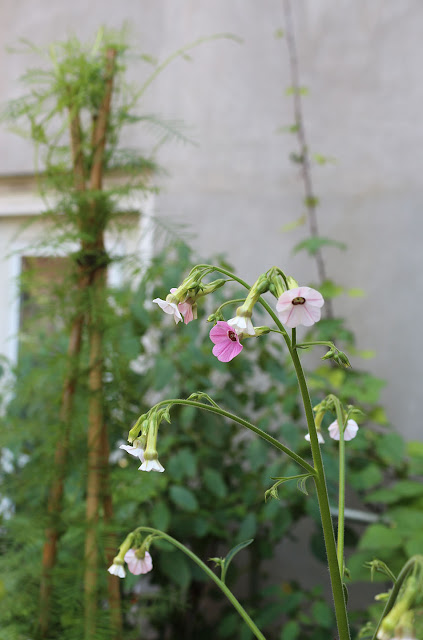On Saturday, after a thunderstorm interrupted my edible wild plant walk for the Peninsula Hotel, I decided to play hooky. I fled our relentless
apartment hunt, bug-eyed from square footage, poor lighting, 10 square feet of outdoor space, and real estate double speak. I headed south to Union Square for the best sort of distraction: good food shopping.
I always scout the whole market first, for pictures and a pre-shop calculation, then circle back to the beginning to buy. I knew what I wanted: It is currant season, and
my gin jars are empty.
Gorgeous new potatoes. We think of them as winter vegetables, but summer is when they are dug, when their leaves turn mottled and ratty.
Tiny aubergines/eggplant went into my bag and we grilled them for supper.
Fat garlic. Ajo blanco season is upon us ( if you have my book the recipe is in the July chapter).
Hills of beans.
And the last of the sour cherries, as the first plums come in. Pluots, far right.
Real peaches.
I pounced on the pineapple weed (
Matricaria discoidea). I have been wanting to infuse some for my Northeastern-flavored vermouth. And now I am... It will be the third vermouth batch and there is plenty of experimenting to do, with about 20 botanicals involved.
I had to buy one box of chanterelles for the Frenchman. He remembers hunting them in France as a child.
At the same stand I squeaked when I saw the day lily buds. At last! Word is spreading about these vegetable treats and I am happy about
my small part in it. But: If you have never eaten them before, sample only a few and wait a day. Some people experience an upset stomach if they eat a lot. It may be an allergic reaction. I have never had a problem, and neither do most people. Eat them raw in salad, pickle them, cook them. Raw, they taste a little like slightly peppery, oniony cucumbers. But mostly like day lilies.
Photogenic sunflowers.
Forty minutes after arriving I squeezed from a sauna-like subway platform onto a packed 6 local train and rode it all the way home to Harlem, a heavy bag over one shoulder and a wide tray of black currants clutched under my other arm. Perspiring in a discrete trickle down my spine.
Half the black currants are now in gin - when they have made it purple and wonderful I will strain it and turn them into my favourite chutney. The rest will become jam. The mushrooms were eaten on toast, the tomatoes with basil from the terrace and most of the other fruit wolfed straight up after a rinsing.
Otherwise, it's business as usual. Looking for a new place with private outdoor space for our outdoor dining selves and my plant proclivities. Some of the best leads have come from friends and readers, Facebookers and Instagrammers; and there have been several generous offers of temporary accommodation for ourselves and for our plants. We appreciate each of them. Thank you.
Keep the suggestions coming, and keep your fingers crossed.

















































